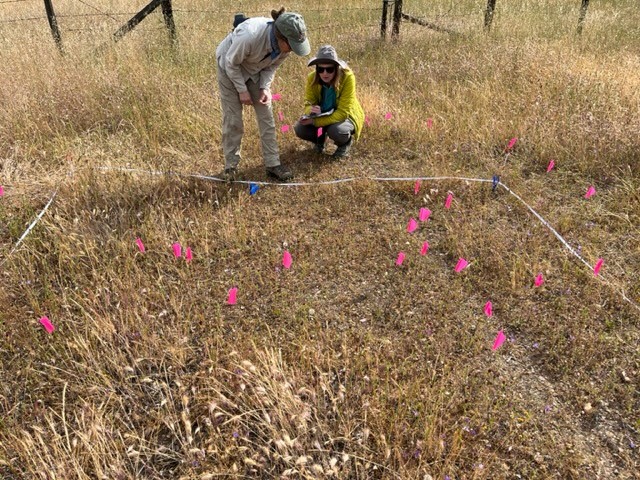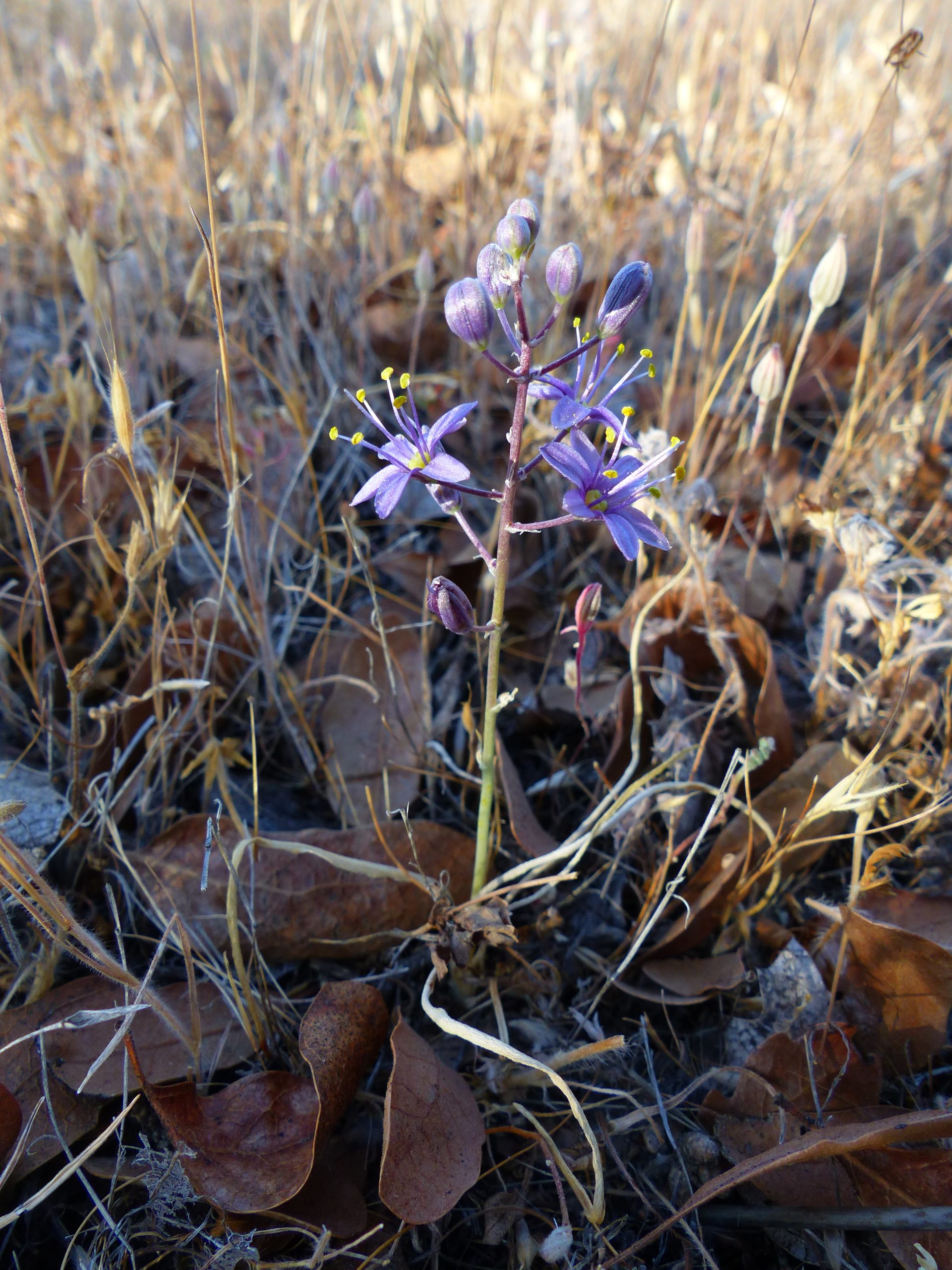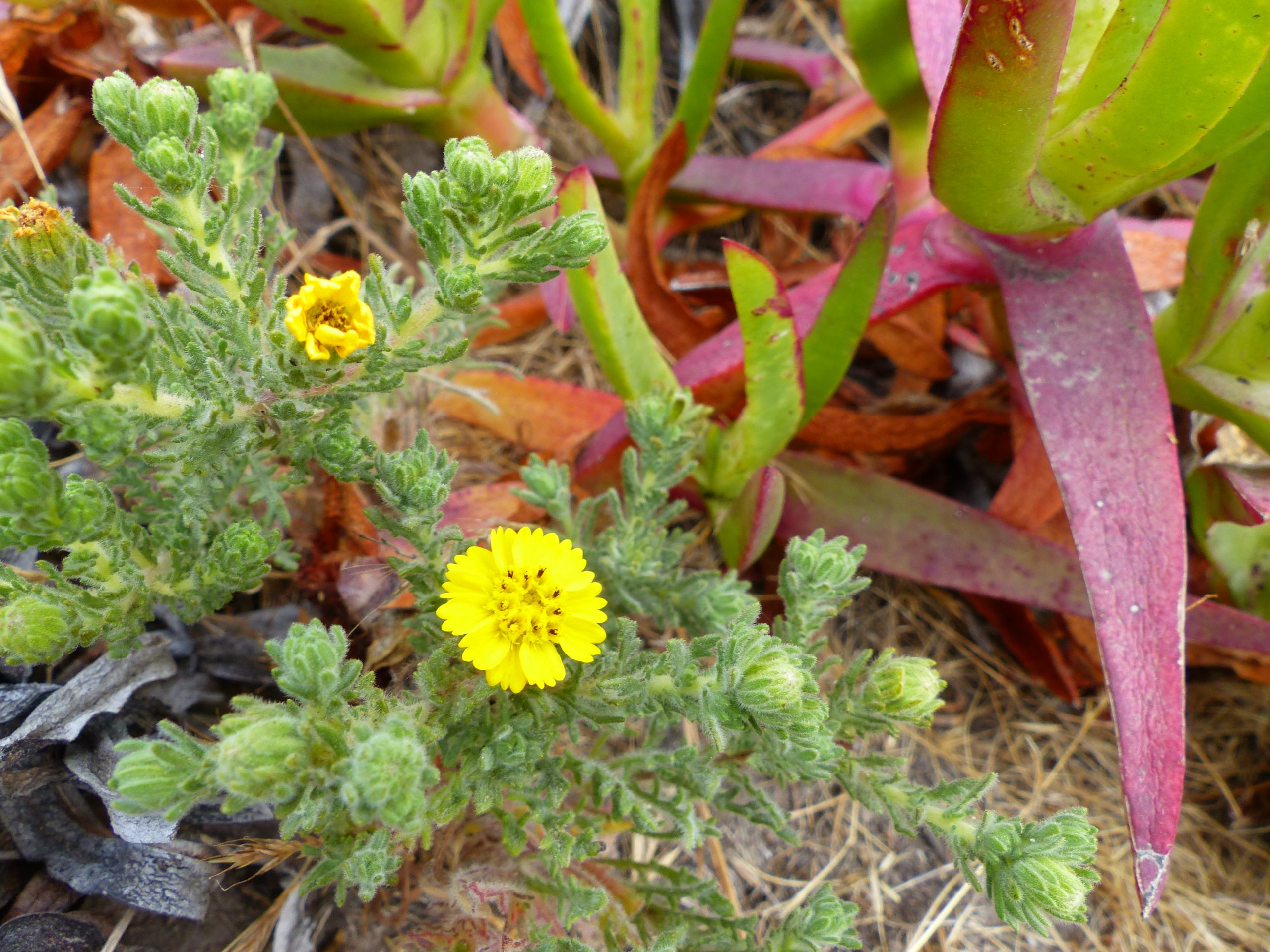Protecting Central Coast Habitat
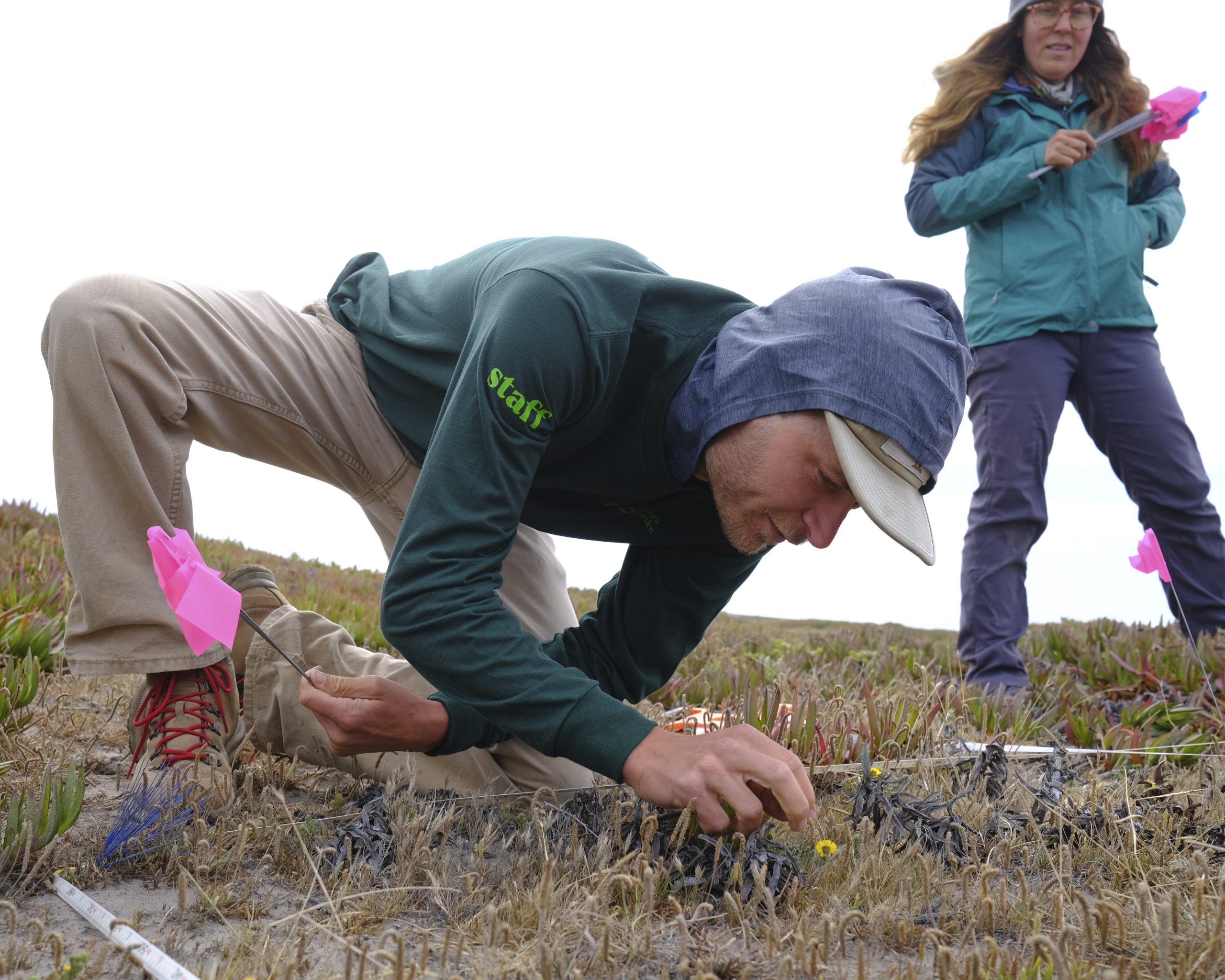
Invasive plants can pose a threat to rare plant populations, but to date there has been little research in California to determine which weeds most threaten each rare plant population. Cal-IPC, in partnership with the Santa Barbara Botanic Garden (SBBG), received a Section 6 grant from the California Department of Fish and Wildlife (CDFW) to support the recovery of federally listed rare plant species along the Central Coast of California by studying the impacts of invasive plants. This grant supports both a Central Coast-wide assessment of invasive plant threat for 50 federally listed rare plant species as well as on-the-ground monitoring of invasive plant threats to three federally listed rare plants: Camatta Canyon amole (Hooveria purpurea var. reducta), Pismo clarkia (Clarkia speciosa ssp. immaculata), and Gaviota tarplant (Deinandra increscens ssp. villosa). These species are all quite small in stature and can be easily overtopped by other species, especially invasives.
This project plans for climate-smart invasive plant management to improve climate resilience of federally listed species and sensitive habitats within the California Central Coast region encompassing Santa Cruz, Monterey, San Benito, San Luis Obispo, Santa Barbara, and Ventura counties. Specific attention is paid to how climate change vulnerability might compound the risks that invasive plants pose to species and habitats.
The information compiled and analyzed by this study provides a foundation for setting strategic priorities for land managers, helping land managers and agencies better identify which rare plant populations are most at risk from invasive plants, which rare plant species are most at risk regionally, and which habitats are most at risk today and into the future. It also identifies three invasive plant species / species groups that appear to be a particular threat to listed species. These are: purple veldtgrass (Ehrharta calycina), annual grasses (Bromus spp. and others), and iceplant (Carpobrotus spp.).
The Santa Barbara Botanic Garden has complemented this field work by collecting plant tissue from the rare plants at each site to support genetic research. Their staff and volunteers are also collecting seeds to test viability and create a conservation seed bank. These collections, coupled with the invasive plant monitoring and regional risk modeling, will help us to better protect these rare plant populations. (Read the Dispatch article on this project, starts on p. 13)
Download the report:
This report is available as a free download. Click here for the file with all documents for Protecting Central Coast Habitat for Listed Plant Species.
Contents:
Executive Summary
Fiscal Report
Grand Amendments
Task 1: Data Collection and Risk Assessment
Task 2: Compile Existing Invasive Plant Data for Other Important Habitats
Task 3: Prioritize Invasive Plant Management
Task 4: Plan Management Implementation
Conclusions
Literature Cited
Appendices
Please cite this report as: California Invasive Plant Council, Tom Robinson Consulting Inc., Creekside Restoration Inc., Santa Barbara Botanic Garden. 2024, and California Botanic Garden. Protecting Central Coast Habitat for Listed Plant Species: Santa Cruz, San Benito, Monterey, San Luis Obispo, Santa Barbara, and Ventura Counties, California. Cal-IPC Publication 2024-07. California Invasive Plant Council, Berkeley, CA. Available at www.cal-ipc.org.
Plants being managed
Start date
2019Location
Central Coast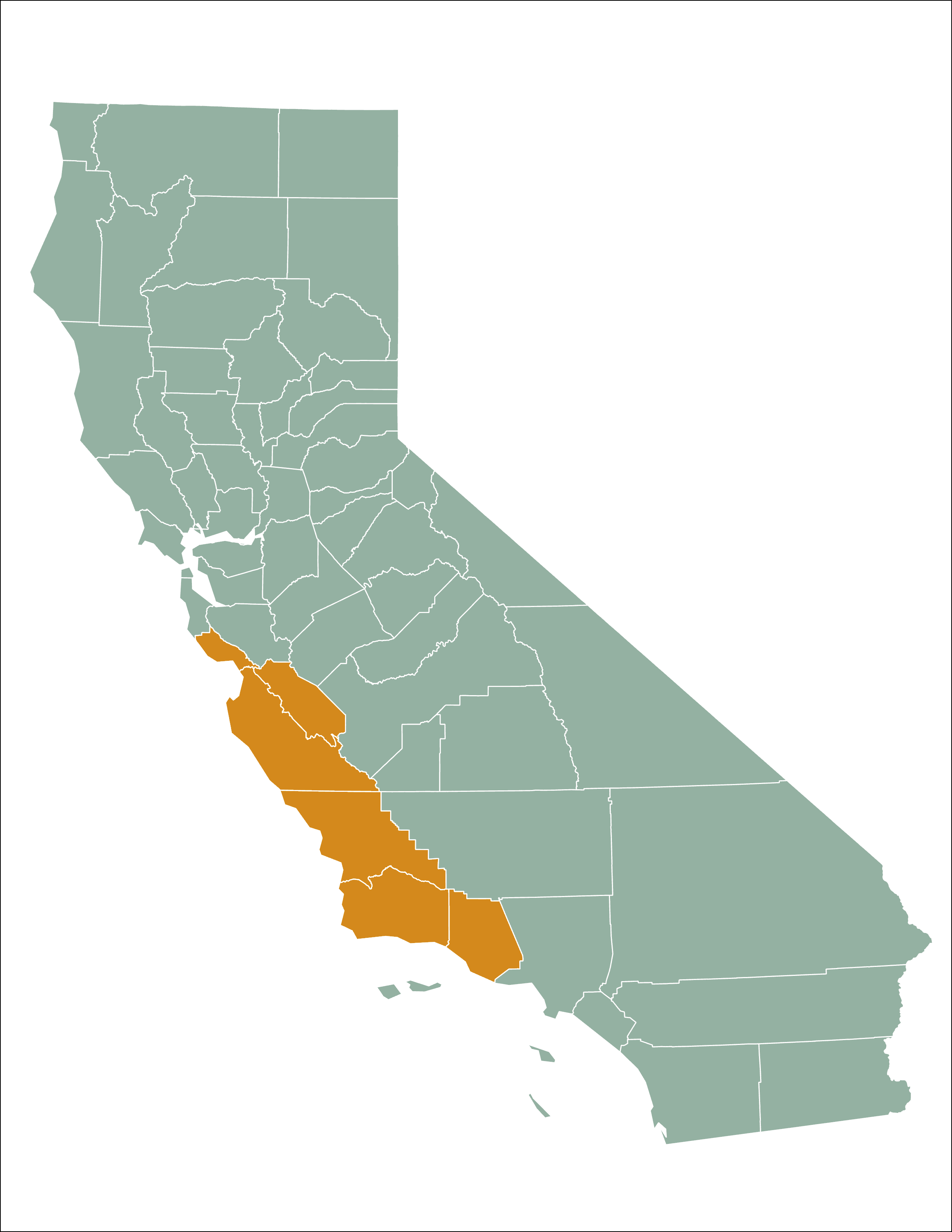
Resources protected
Sensitive, rare or Federally-listed endangered plants, including Gaviota tarplant (Deinandra increscens), Pismo clarkia (Clarkia speciosa), and Camatta Canyon amole ( Hooveria purpurea var. reducta )
Project goal
This project plans for climate-smart invasive plant management to improve climate resilience of federally listed species and sensitive habitats within the California Central Coast region encompassing Santa Cruz, Monterey, San Benito, San Luis Obispo, Santa Barbara, and Ventura counties.
Project partners
Project funders
Project photos
